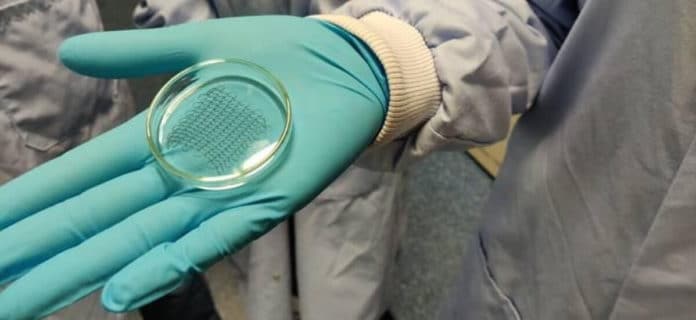When a person has a heart attack, some of the cardiac tissue that performs the contraction task ends up being replaced with scar tissue, which does not contract or pump, as well as healthy muscle tissue. The scar tissue in the heart can compromise its function according to its size. However, the new polymer structure patch can correct the defects caused by scar tissue in the heart.
Bioengineers at Trinity College in Dublin, Ireland, have developed a prototype patch that could help repair a broken heart. The new patch can withstand mechanical demands and mimic the electrical signaling properties allowing the human heart to pump blood to all body parts.
The polymer patch – manufactured via Melt Electrowriting (MEW) System – adheres to the heart’s outer surface and allows bridging of the area of scar tissue. The new patch is made of a medically approved stretchable polymer material and is coated with the electroconductive polymer “polypyrrole” to provide electrical conductivity while maintaining cell compatibility.
It is believed that when applied to the heart’s outer surface, the new patch will withstand repeated stretching, which is a dominant concern for cardiac biomaterials, and show good elasticity, to mimic that key property of heart muscle accurately.
“Our study looks at a traditional material and, through effective design, allows us to mimic the direction-dependent mechanical movement of the heart, which can be sustained repeatably. This was achieved through a novel method called ‘melt electrowetting.’ Through close collaboration with the suppliers located nationally, we were able to customize the process to fit our design needs,” said Michael Monaghan, Ussher assistant professor in biomedical engineering at Trinity and the senior author of the paper, published in the journal Advanced Functional Materials.
“This study currently reports the development of our method and design, but we are now looking forward to furthering the next generation of designs and materials with the eventual aim of applying this patch as a therapy for a heart attack,” Professor Monaghan added.
The research team has tested the patch in a lab environment and is planning animal trials.
“Our electroconductive patches support electrical conduction between biological tissue in an ex vivo model. These results, therefore, represent a significant step towards generating a bioengineered patch capable of recapitulating aspects of heart tissue – namely its mechanical movement and electrical signaling,” said Dr. Dinorath Olvera, Trinity.
